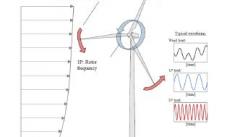
Laboratoire
Soutenance de thèse de Adnan Sahyouni intitulée : "Rigid inclusions under wind turbine foundation: experimental behaviour and numerical studies" le lundi 11 décembre à 14h00 à l'amphi Émilie du Châtelet de l'INSA lyon
Adnan a soutenu brillament sa thèse aujourd'hui: féliciations!! En voici le résumé: Wind turbines stress their foundations in relatively atypical ways compared to other common structures. The manufacturer's loading list encompass thousands of different scenarios, leading to relatively uncommon design approaches of the turbine’s foundations. Among the various geotechnical solutions to support such structures, ground improvement techniques occupy a large share. Rigid inclusions are considered one of the most widespread in this field, where the number of projects in Europe and worldwide is increasing significantly, including a very wide application in onshore wind farms.The significant increase in the application of rigid inclusions as well as their research background has led to a better understanding of their physical concept in various applications. The research interest of this work lies in the analysis of the complexity of load transfer from wind excitations and the effects of the structure on the soil reinforced by rigid inclusions. The load distribution between the soil and the inclusions involves several interaction mechanisms between the different structural components, including the gravity foundation, the load transfer platform, the soil, and the inclusions. An attempt is made to simplify these complex mechanisms by considering each component separately, thanks to the multiaxial research conducted in this dissertation: (1) Instrumentation of a real scale wind turbine foundation in addition to monitoring a static load test on an isolated column adjacent to the wind turbine platform. (2) Nonlinear finite element modelling, including soil laboratory tests, unit cells in axisymmetric modelling, and three-dimensional approach (3) Development of a novel macroelement for rigid inclusions under a gravity foundation to account for the various interactions and constrain the geometric effect, as a contribution to the design approaches.The research findings of this work can be summarised as follows: (1) The experimental work has allowed to validate the initial assumptions of the project, to quantify the load transfer to the rigid inclusions and the interaction between the columns and the soil. The stored monitoring data were used to address several subjects, including determining the moment load at the base of the foundation as a function of wind speed. (2) Soil models were derived by simulating soil laboratory tests using the finite element method. The experimentally calibrated numerical modelling showed good agreement with the available measurements and highlighted the boundary conditions in the two-dimensional models that are overcome in the three-dimensional modelling. (3) The comparison of the macroelement results with the finite element modelling was very satisfactory and validated the model with incomparable time difference.This dissertation is part of FEDRE (Fondations d'Eoliennes Durables et REpowering) project. The findings presented in this dissertation would be seen as a contribution to the repowering phase of onshore wind turbines founded on rigid inclusions.

